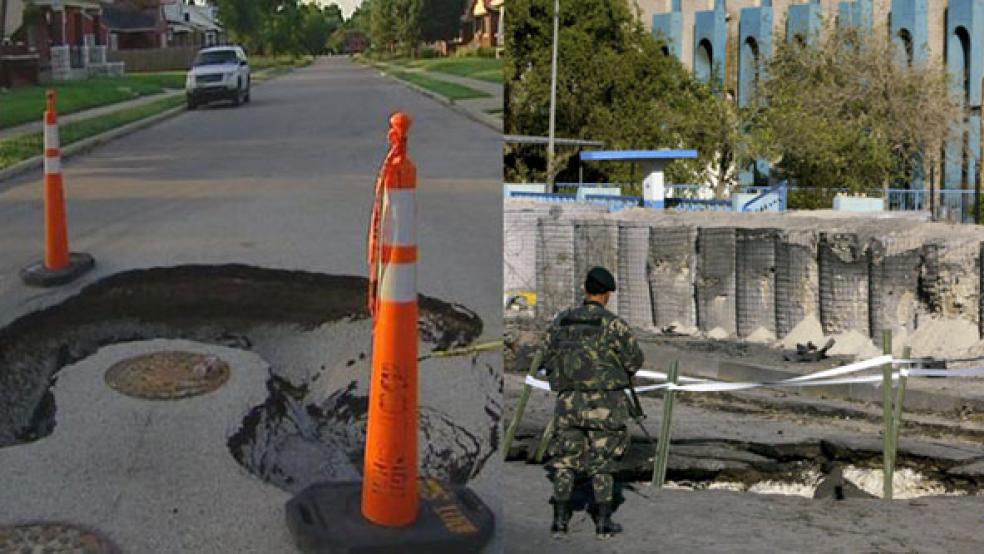While the Beltway’s budget debate hits a bump in the road, Main Street is looking more cracked, chipped and decrepit than ever. America’s 4 million miles of open roads and highways— which would wrap more than 160 times the around the world -- is crumbling. The American Society of Civil Engineers' 2009 infrastructure study gave America’s roads a “D-”grade.
And with state and local budget battles raging, no one knows when and if money will be available to fix them. A 2010 report from U.S. PIRG (Public Interest Research Groups) found that 45 percent, or 150,000 miles, of interstate highways need repair and more than 70,000 bridges are decaying. The Transportation Dept. estimates that the nation would have to come up with $100 billion a year to simply maintain current road conditions – a $30 billion increase from current levels.
Metropolitan areas tend to have the biggest problems, with 63 percent of urban roads rated in fair, mediocre, or poor condition. Northern cities that are frequently pummeled with extreme weather are especially prone to cracked and eroded asphalt. The longer a pothole or crevice goes unrepaired, the more expensive it is to fix. The cost to resurface one mile of road with asphalt can run about $50,000, whereas major rehabilitation can cost $500,000. Both are better options than starting over completely: one mile of brand new concrete runs from $700,000 to $1.2 million.
This past winter was particularly brutal for some cities and states: New York City spent $2 million to fill 213,000 potholes this winter, an 11 percent increase over last year; Philadelphia filled more than 26,000 potholes in 2010, double the usual number, and city officials expected more in 2011; the Michigan Department of Transportation is facing a $770 million shortfall to fix roads due to the bad winter and falling gas-tax revenue; and Massachusetts spends $155 million a year to patch potholes but the state is asking for $55 million more this year for road repair in the aftermath of the harsh winter.
The Highway Trust Fund, the primary account that pays for transportation improvements and is largely funded though the federal gas tax, ran out of money in September 2008; the gas tax hasn’t been adjusted for inflation since 1993. “Years of deferred maintenance have left us with hundreds of billions of dollars worth of fixes to be made to our roads and bridges,” the authors of the PIRG report. Potholes can cause major damage to vehicles: busted axles, flat tires, lost hubcaps, and motorists end up spending $67 billion a year in car repairs caused from poor road conditions.
|
Ten States with the Roughest Roads, 2008 |
|||
|
State |
Percent of Roads in Poor or MediocreCondition |
Percent of Roads inLess than Good Condition |
|
|
1. Alaska |
35% |
75% |
|
|
2. Rhode Island |
34% |
84% |
|
|
3. New Jersey |
33% |
82% |
|
|
4. Vermont |
28% |
63% |
|
|
5. California |
28% |
76% |
|
|
6. MAssachusetts |
26% |
71% |
|
|
7. Hawaii |
26% |
90% |
|
|
8. Louisiana |
23% |
56% |
|
|
9. Mississippi |
17% |
57% |
|
|
10. Illinois |
17% |
57% |
|
|
Sources: U.S. PIRG |
|||





